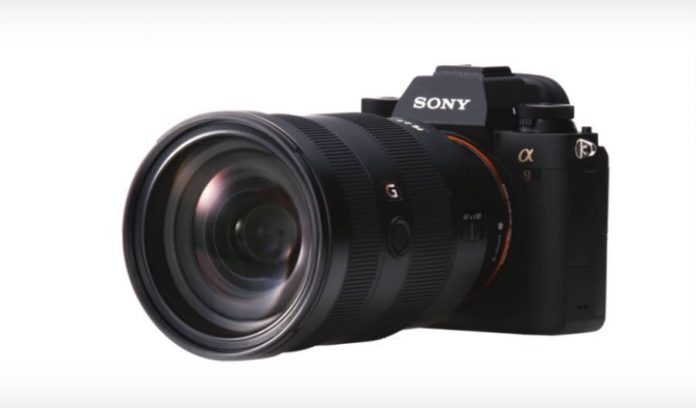
Sony unveiled last week its new A9 (α9) camera, a product that packs the latest imaging technology by the tech giant. It features a new full-frame sensor and processor, plus enhanced shooting capabilities. It launches on May 25 in the U.S for $4,499.
The A9 will try to squeeze in between the competing DSLR cameras by Canon and Nikon. The two powerhouses enjoy from established reputations in the market, but Sony is trying to change things up by offering smaller, cheaper, and equally capable equipment.
The company has been making advances as well in the field of full-blown DSLR, compact digital cameras, and smartphone optics for a while. Everyone from Samsung to Motorola and even Apple have used Exmor sensors in their devices.
Sony A9: Specs and design
Sony’s A9 was designed to pack state-of-the-art technology in a smaller form factor than its competitors. The camera weighs less than half the Canon EOS-1D does and it is almost half as tall.
While it is true that less weight is more desirable for photographers that already carry heavy loads of equipment, it is also true that more weight aids with sturdiness and stability when shooting photo or video.
The A9 compensates that by offering something its competitors don’t: in-body image stabilization. 5 axis points hold the sensor in place, whereas traditional DSLRs rely on optical image stabilization (OIS) mechanisms built in different lenses.
The sensor in question is a 24.2 MP Exmor RS CMOS14-bit, which delivers up to 20 times the data processing speed of A9 predecessors in a 35mm, full-frame component.
A BIONZ X processing engine also helps with the workload, which users can then relay via Wi-Fi, NFC, or Bluetooth. LAN connections are also supported via an Ethernet port on the side of the camera.
Sensitivity ranges from ISO 100 to 51,200, while continuous shooting can be done at up to 20 fps using the new digital shutter in the A9. The camera offers sublime blackout-free capture to avoid an undesired effect that is common in DSLR burst shooting with mechanical shutters.
On top of that, sports photography fans are in for a treat with the A9 shutter’s 1/32,000 top speed, allowing them to snap precise moments free of vibration and loud sounds thanks to its silent technology.
The focusing system on the A9 counts with 693 phase detection auto-focus (AF) points, which are always scanning the image to maintain focus. This system ensures that up to 93% of the frame is in focus when in AF mode.
Other than that, the camera uses its full-frame capabilities when recording as well, delivering 4K (3840 x 2160p) video after downscaling from 6K pixel readout. The result is footage with more detail and depth, which can also be taken in Super 35mm mode.
The Sony A9 supports up to two SD cards for storage, but only one of the slots is UHS-II compatible. It also supports Memory Stick, and the battery lasts more than twice as much as other Alpha cameras in the lineup.
Sony A9: Price and availability
Sony will start shipping the A9 mirrorless camera on May 25 in the U.S. for $4,499. This is the cost of the body only, as lenses come separately and take that price tag above the $5,000 mark.
In Europe and the United Kingdom, the camera will cost €5,300 and £4,500 respectively, and it will arrive later in June. Sony is expected to make the camera available in Canada and Australia as well.
Source: Sony











sony A9 what do I gey for $4499.00